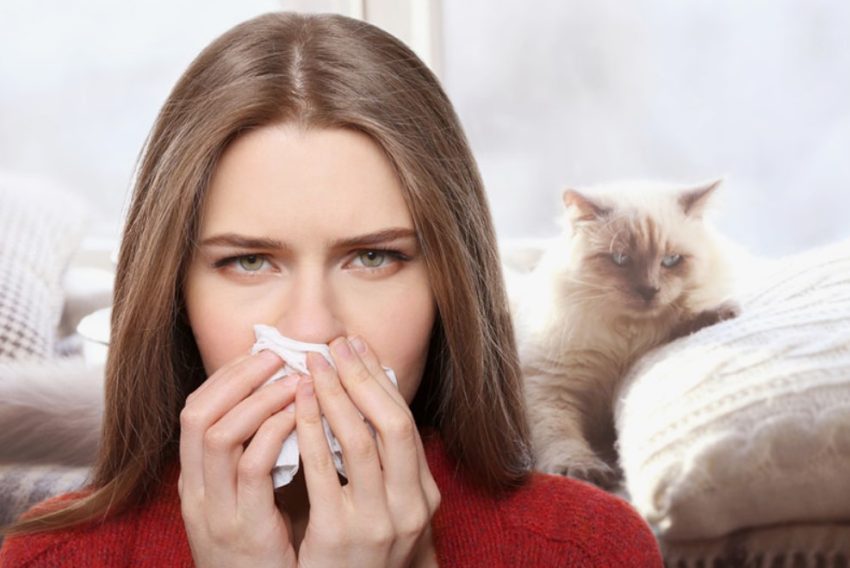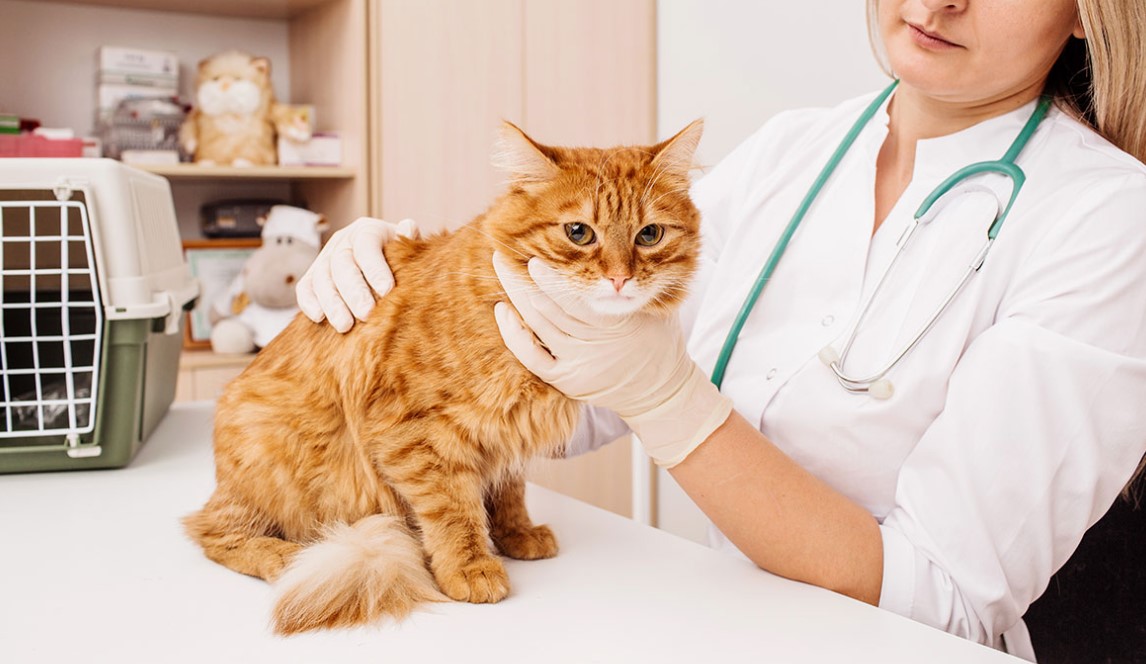Understanding Cat Allergies: Symptoms, Causes, Treatment, and Prevention

Did you know that cats, like humans, can suffer from allergies? These allergies can cause a range of symptoms, from mild discomfort to severe health issues, and they may be triggered by various factors, including food, environmental elements, or common household products. For example, food allergies often require special dietary adjustments such as switching to hypoallergenic cat food in Dubai, which is designed to minimize allergic reactions. Recognizing and addressing allergies in cats is crucial to ensuring they lead a healthy and comfortable life. This detailed guide will explore everything you need to know about cat allergies, from identifying symptoms to implementing effective treatments and preventive measures.
What Causes Allergies in Cats?
Cats’ immune systems, like those of humans, are designed to protect them from harmful substances such as bacteria, viruses, and toxins. However, in some cases, their immune systems overreact to otherwise harmless substances, treating them as threats. This overreaction triggers a series of symptoms that we recognize as allergies. There are several common types of allergens that affect cats:
- Food Allergies
These occur when the immune system reacts negatively to specific ingredients in a cat’s diet, often proteins such as beef, chicken, or fish. While grains like wheat or corn are also potential allergens, proteins are the primary culprits in food allergies. - Environmental Allergies
Environmental allergens include pollen, mold, dust mites, and even certain plants. Outdoor cats may come into contact with pollen or mold spores, while indoor cats are more likely to be affected by dust mites, household cleaners, and other chemicals. - Flea Allergies
Flea bites can cause significant allergic reactions in some cats. Even a single flea bite can lead to intense itching and discomfort, as cats with flea allergies are hypersensitive to flea saliva. - Contact Allergies
Cats can develop allergies when they come into direct contact with certain substances, such as flea collars, bedding, detergents, or certain types of fabrics. These allergies typically manifest as skin irritations. - Household Chemicals
Products such as cleaning solutions, laundry detergents, air fresheners, and even perfumes can cause allergic reactions in sensitive cats. Even prolonged exposure to these substances can lead to chronic health problems.

What is a Food Allergy in Cats?
A food allergy is a common condition that occurs when a cat’s immune system overreacts to a specific ingredient in its diet. The allergic reaction usually arises from proteins found in meats, dairy products, or grains. However, it’s important to note that food allergies in cats typically develop over time. This means that even if your cat has been eating the same food for months or years without any issues, they could suddenly develop an allergic reaction to it.
Unlike food intolerances, which involve digestive issues such as vomiting or diarrhea, food allergies tend to cause more systemic symptoms, including skin irritation and itching. This makes diagnosing food allergies in cats a bit more challenging, as the symptoms often overlap with other types of allergies.
Cats Prone to Food Allergies:
- Certain Breeds
Certain breeds of cats, such as Siamese, Maine Coons, Bengals, Burmese, and Abyssinian cats, are genetically predisposed to food allergies. While any cat can develop an allergy, these breeds are more likely to show allergic reactions. - Kittens Without Mother’s Milk
Kittens that did not receive sufficient mother’s milk or were weaned too early have weaker immune systems, making them more susceptible to developing food allergies. - Young and Middle-Aged Cats
The onset of food allergies typically occurs between the ages of 5 months and 6 years. The average age for the first signs of food allergies is around 3-4 years. Kittens are particularly vulnerable during periods of growth and immune development.
Recognizing the Symptoms of Food Allergies in Cats
Cats suffering from food allergies can exhibit a variety of symptoms, primarily affecting their skin and respiratory system. While the symptoms can vary in severity, it’s important to monitor your cat’s behavior and appearance for signs of discomfort. Common symptoms of food allergies include:
Dermatitis
This is a common manifestation of food allergies, where the cat develops red, inflamed, and irritated skin.
Itching
Cats with food allergies often experience intense itching, leading to persistent scratching and licking. This can result in hair loss or bald spots, especially around the face, neck, and ears.
Redness of the Eyes
Allergies can cause the eyes to become red and inflamed, often accompanied by watering or discharge.
Nasal Discharge
Sneezing and runny noses are typical symptoms of respiratory allergies but can also occur with food allergies.
Coat Condition
Cats with food allergies may develop poor coat quality. Their fur may appear dull, weak, or they may experience hair thinning or baldness.
Scratching and Licking
Constant licking of certain areas, such as the paws, belly, or hindquarters, is a sign that something may be wrong. This repetitive action can lead to skin infections.
Coughing and Sneezing
Respiratory symptoms such as coughing and sneezing may accompany other allergy symptoms.
Slow Growth in Kittens
Allergies, particularly food-related ones, can interfere with a kitten’s growth and development.
The most noticeable and consistent symptom of food allergies is itching, which can vary in intensity from mild to severe. Unlike seasonal allergies that tend to flare up during specific times of the year, food allergies are typically constant and can affect the cat year-round.
Diagnosing Food Allergies in Cats
Given that the symptoms of food allergies are often similar to other types of allergies or health conditions, diagnosing food allergies can be tricky. A veterinarian will usually recommend an elimination diet to confirm the presence of a food allergy. This involves removing potential allergens from the cat’s diet for several weeks and monitoring for improvements in symptoms.
During this period, the cat is typically placed on a special hypoallergenic diet consisting of novel proteins or hydrolyzed protein diets, which are unlikely to trigger allergic reactions. If the symptoms improve during this period and then reappear when the original food is reintroduced, a food allergy is confirmed. It’s a slow but effective process in identifying the specific ingredient causing the reaction.

Treatment Options for Cat Allergies
Once a diagnosis of food allergy or any other type of allergy has been made, the primary goal is to eliminate or reduce exposure to the allergen. This can be achieved through various methods:
Elimination of the Allergen
This is the most straightforward and effective approach. In the case of food allergies, the cat’s diet is modified to exclude the allergen. A hypoallergenic or specially formulated diet may be prescribed. For environmental allergies, exposure to pollen, dust, or chemicals should be minimized, and for flea allergies, effective flea control measures should be implemented.
Antihistamines
While there are no cat-specific antihistamines, many of the same medications used to treat allergies in humans can be prescribed to cats by veterinarians. These medications help reduce the severity of allergic reactions but should only be used under the guidance of a vet, as the dosage must be carefully controlled.
Topical Treatments
To relieve itching and irritation, veterinarians often prescribe ointments, lotions, or sprays designed for cats. These products can help soothe irritated skin and reduce inflammation. Eye and ear drops may also be used if the cat is experiencing eye or ear-related allergy symptoms.
Steroid Treatment
In more severe cases, steroids may be prescribed to reduce inflammation and control allergic reactions. However, long-term use of steroids should be avoided due to potential side effects.
Nutritional Management
For food allergies, a carefully controlled diet free from allergens is crucial. Many high-quality cat foods are formulated with novel proteins like venison, duck, or rabbit, which are less likely to trigger allergies. Pet owners can work with their vet to determine the best dietary plan.
Environmental Adjustments
If environmental allergies are suspected, maintaining a clean home can help reduce exposure to allergens. Regular vacuuming, air purification, and minimizing the use of scented products like air fresheners can all contribute to lowering the allergen load in the home.
Preventing Allergies in Cats
Preventing allergies in cats may not always be possible, but there are steps you can take to minimize the risks and ensure your pet stays healthy. Here are some practical tips to help reduce the likelihood of allergies:
Flea and Parasite Control
Flea allergies are one of the most common types of allergies in cats, but they are easily preventable with regular flea control treatments.
Safe Storage of Chemicals
Store household cleaning products and chemicals in places that are out of reach for your cat, and try to use environmentally friendly, non-toxic alternatives whenever possible.
Frequent Cleaning
Regularly vacuum and dust your home to remove potential allergens like dust mites, mold spores, and pet dander. Wet cleaning can also help reduce the buildup of allergens.
Controlled Diet
Feed your cat a high-quality diet with a limited number of protein sources. This can help reduce the risk of food allergies developing over time. Avoid giving your pet human food or table scraps, as these can introduce allergens that their body may not handle well.
Monitor New Foods
Whenever introducing new foods into your cat’s diet, do so gradually and monitor them closely for any signs of allergic reactions. If any symptoms appear, consult your vet.
Use Odorless Products
Choose unscented litter and cleaning products that are free from harsh chemicals or perfumes, as these can trigger respiratory allergies.
Vet Check-ups
Regular veterinary visits are essential for maintaining your cat’s overall health. Vets can detect early signs of allergies or other health issues and provide timely treatment.
Smoke-Free Environment
Exposure to tobacco smoke can worsen respiratory allergies in cats. Avoid smoking indoors or near your pet.
Proper Feeding Bowls
Use ceramic or stainless-steel bowls for feeding and drinking, as some cats can develop allergies to plastic.
Conclusion
Cat allergies, whether they are caused by food, fleas, or environmental factors, can be difficult to manage but are not insurmountable. By understanding the signs, seeking professional veterinary guidance, and taking preventive measures, you can help your cat live a happy, comfortable life free from the discomfort of allergies. Managing allergies requires patience and dedication, but the reward is a healthier and more content feline companion. Always remember that the earlier you identify and address an allergy, the easier it will be to manage the symptoms and prevent further complications.


